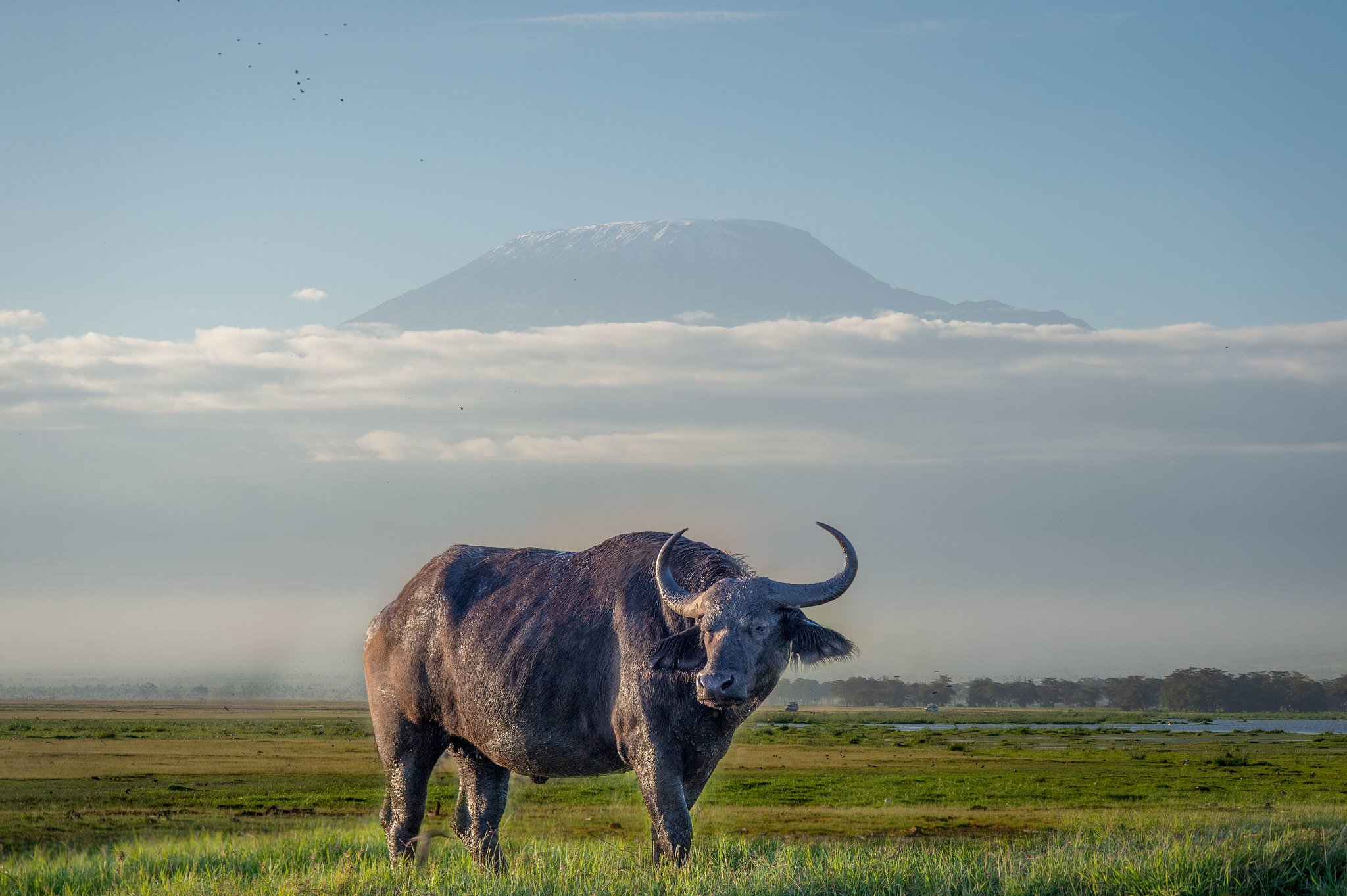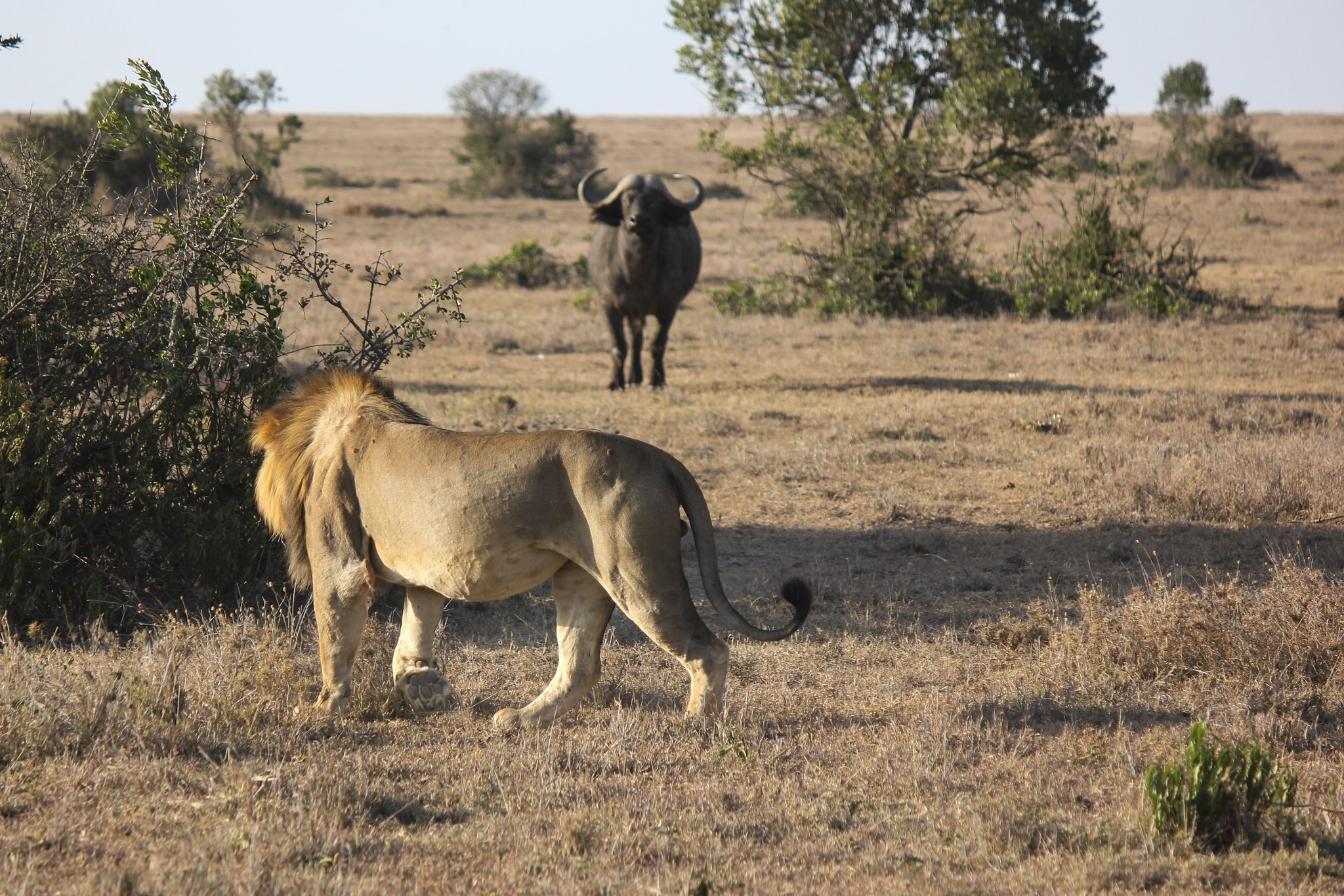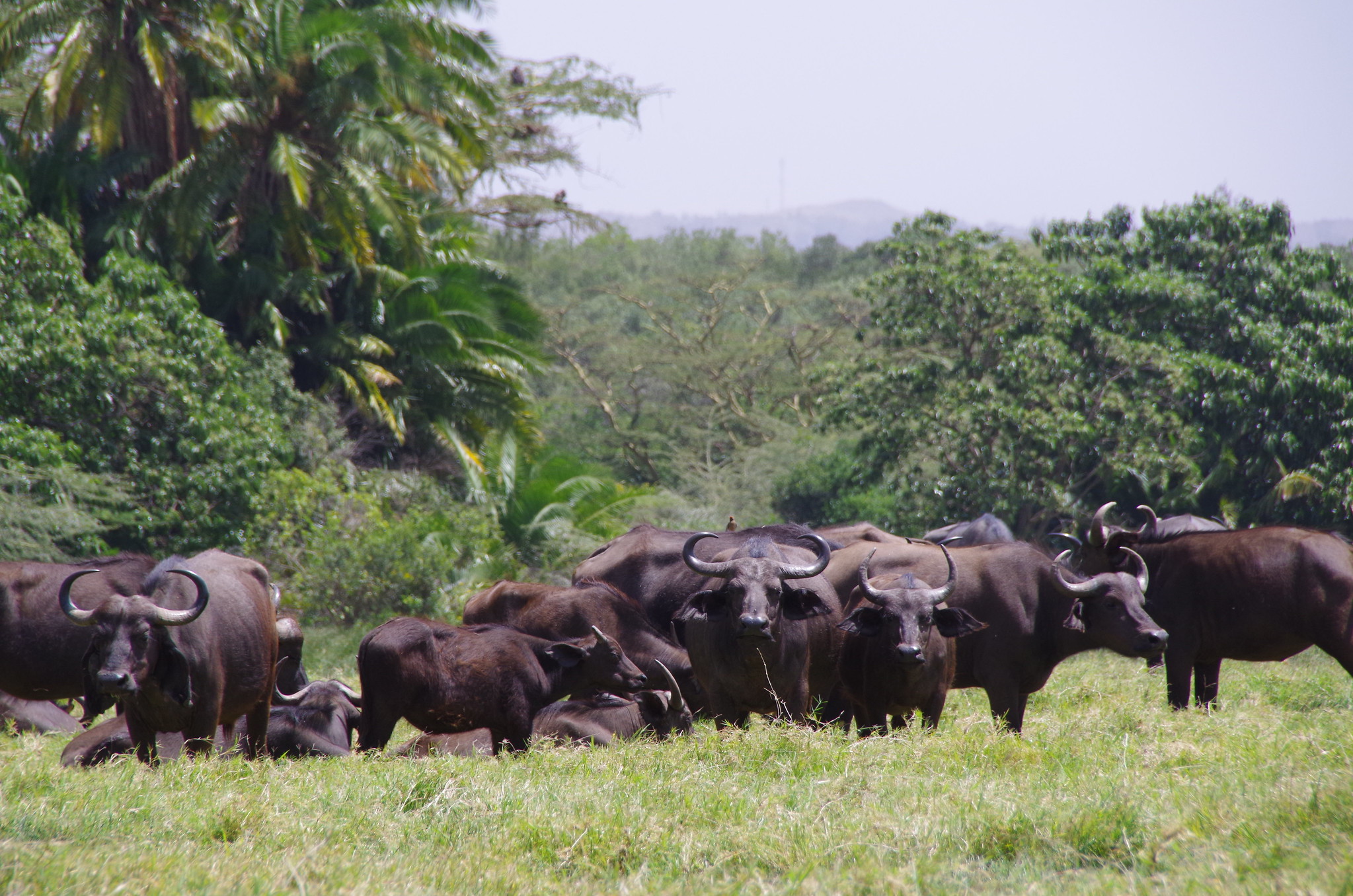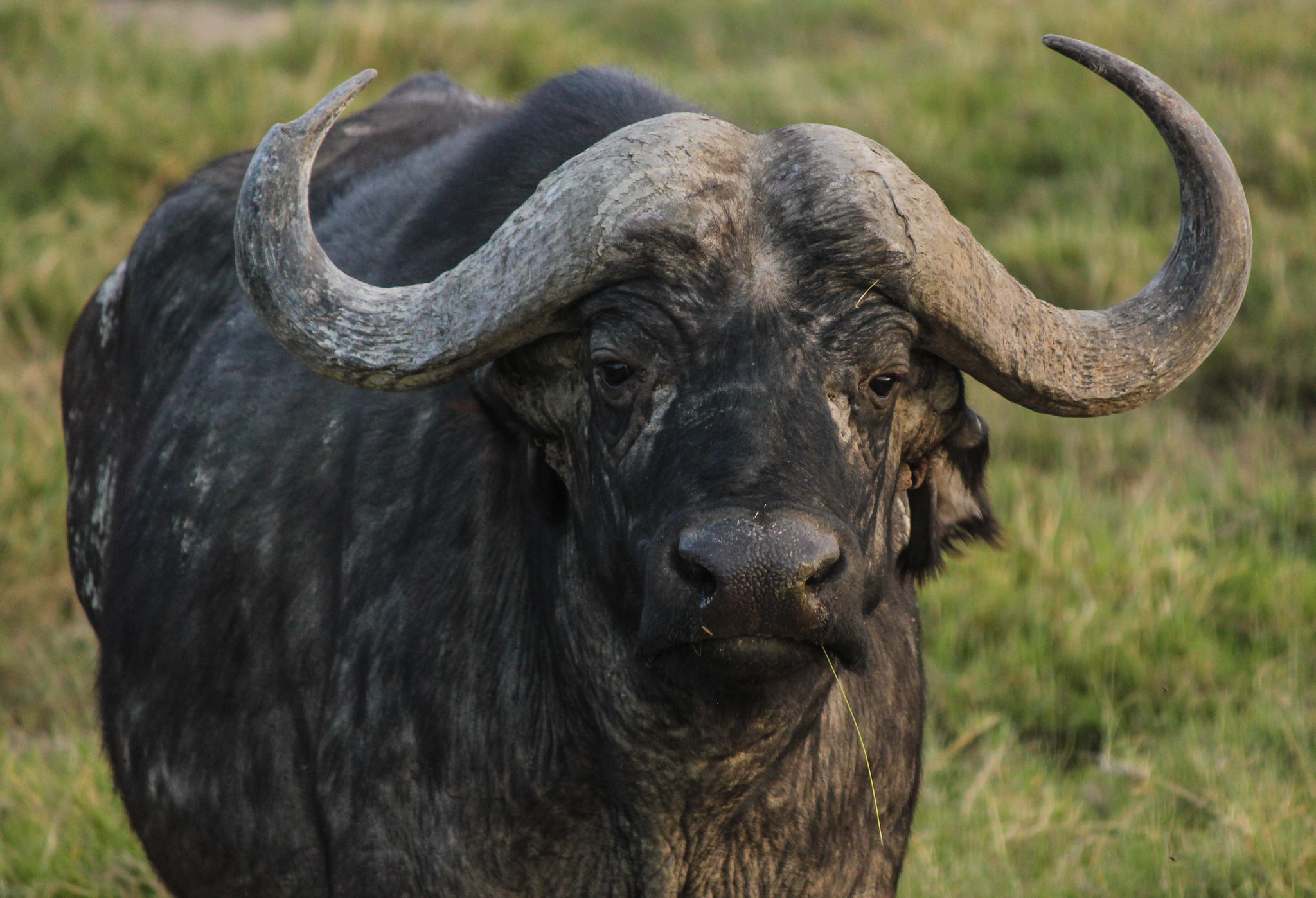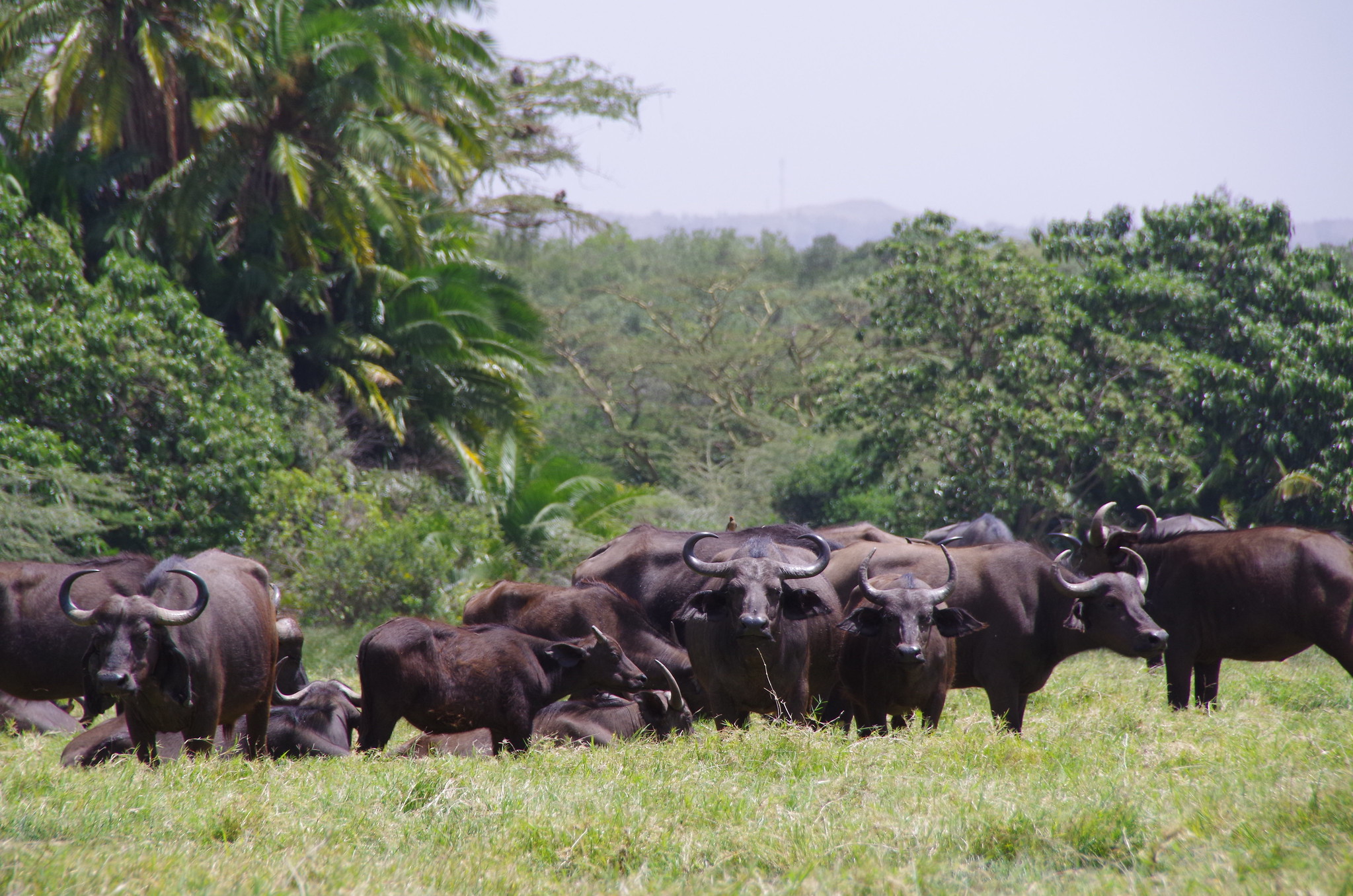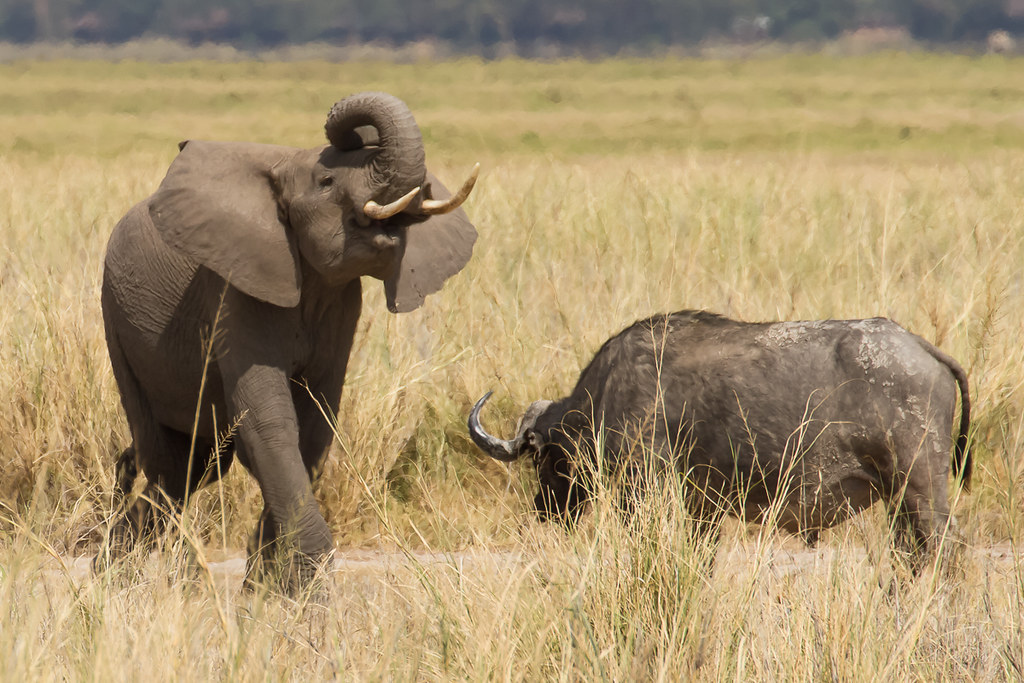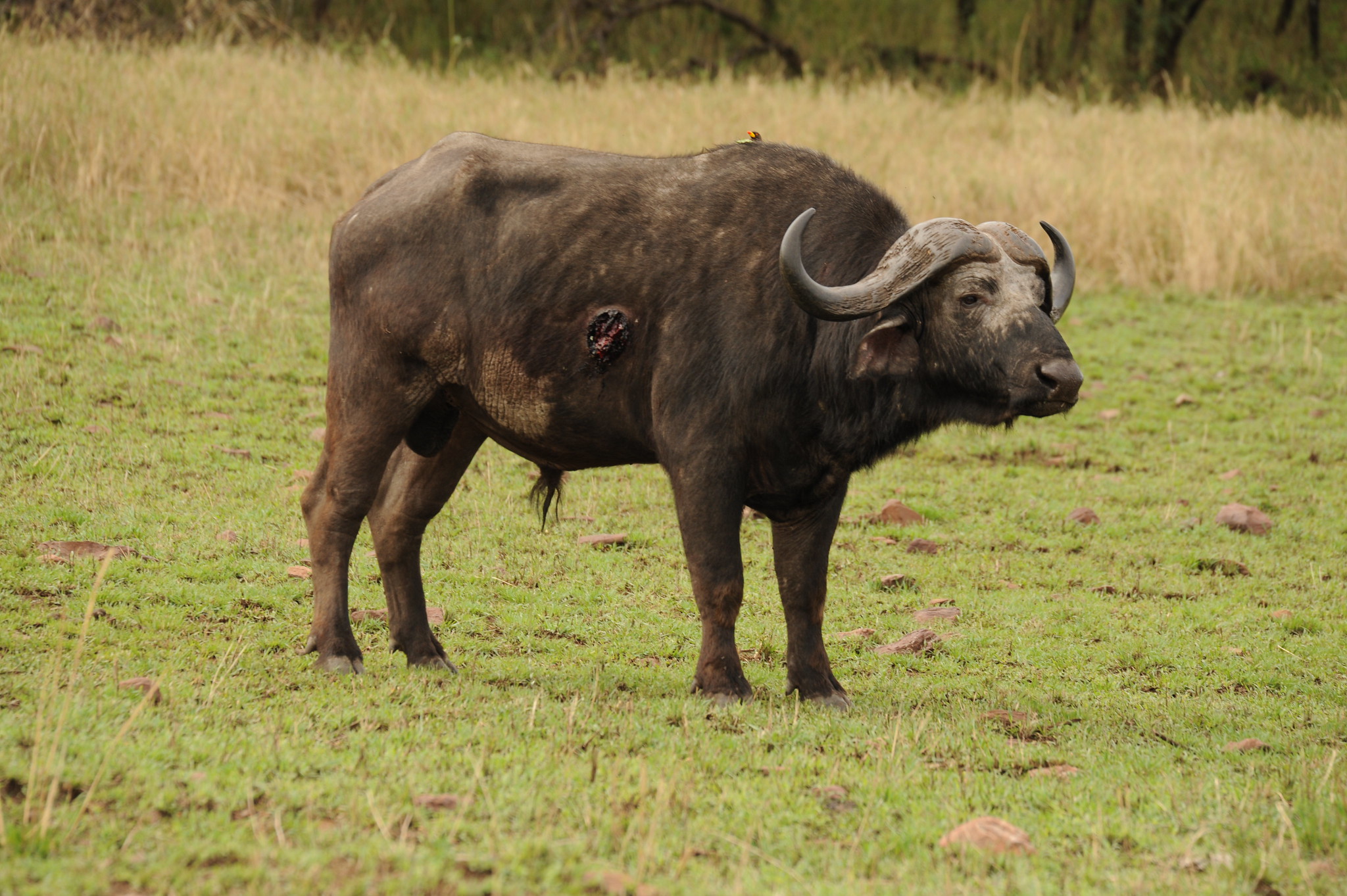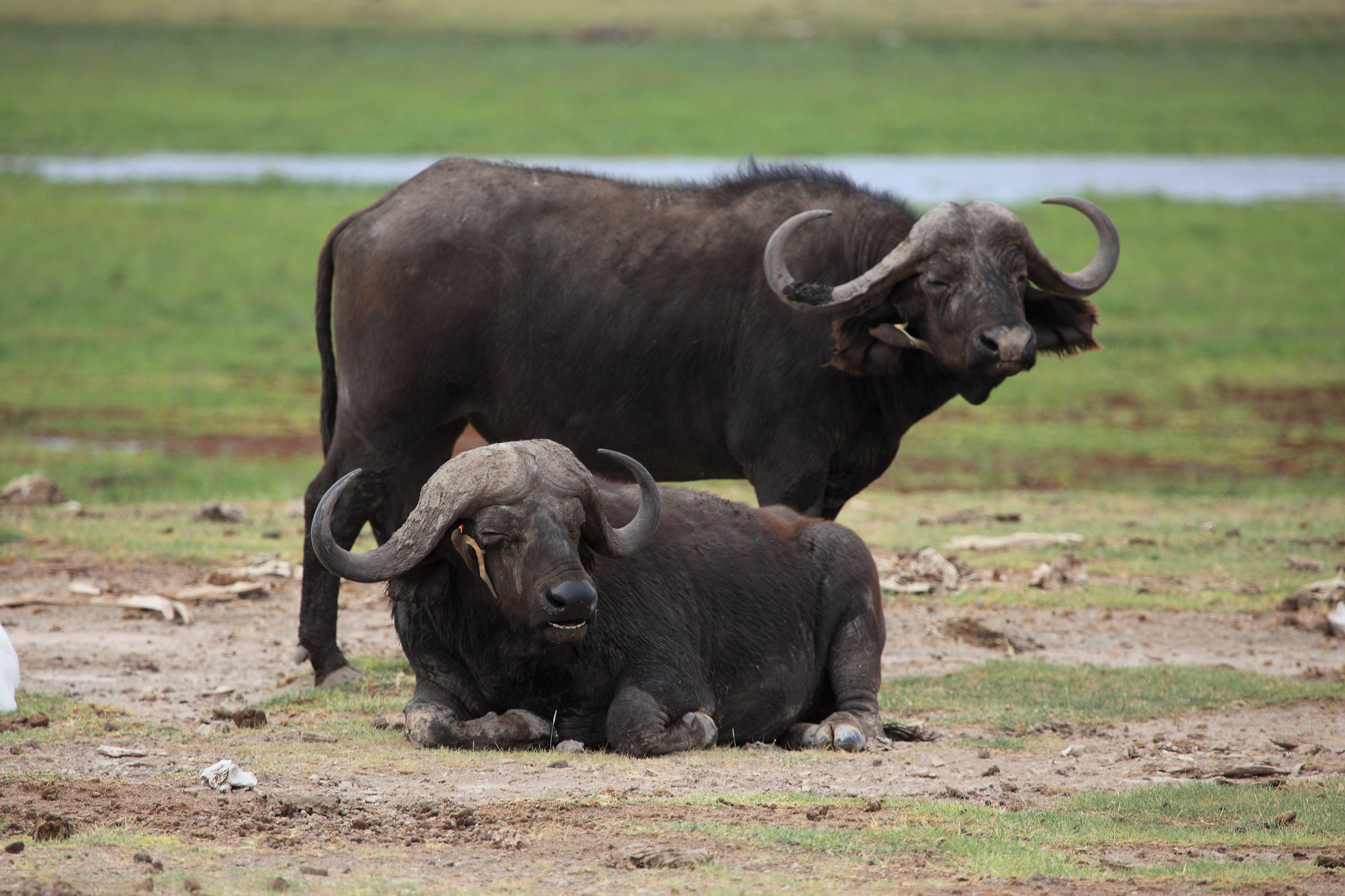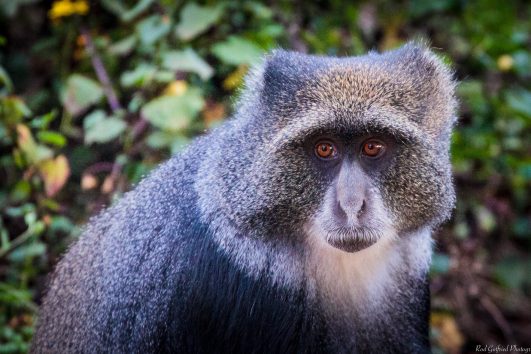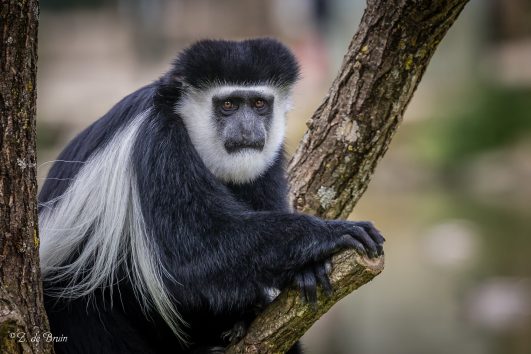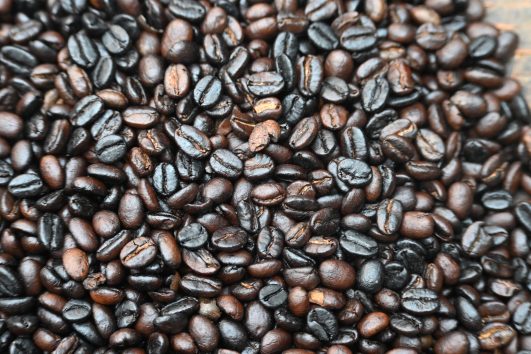The Cape buffalo on Kilimanjaro is a rare visitor that is seen on very rare occasions. They usually migrate from the neighbouring Amboseli National Park sometimes and can be spotted particularly on the Shira Plateau and the Saddle and near Kikelelwa Camp on the Rongai Route. However, on Mount Meru, buffaloes are a common occurrence, especially in the savannah of Arusha National Park. This is the main reason why you have to be accompanied by an armed ranger to climb Mount Meru in Arusha. The Cape also known as the African buffalo, is one of Africa’s most formidable and iconic large mammals. It’s renowned for its strength, size, and the unpredictability of its temperament, making it one of the “Big Five” game animals. Other places to see buffaloes in East Africa include Mount Kenya National Park, Amboseli, and Masai Mara in Kenya. Serengeti, Tarangire, lake Manyara and Ngorongoro Crater are amazing places to see bufalloes in their natural habitat in Tanzania.
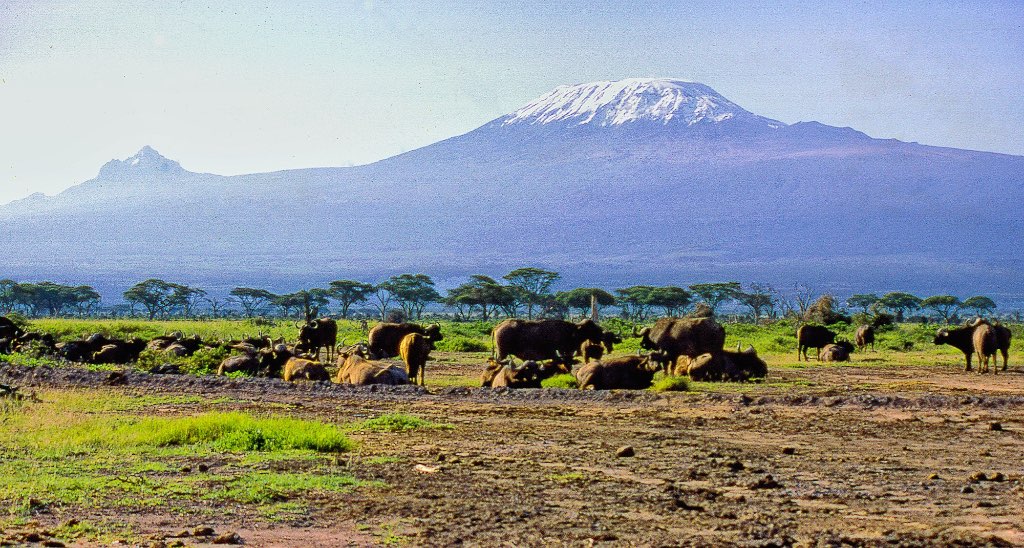
While Mt Kilimanjaro is in Tanzania the photo was taken in Amboseli National Park, which is in Kenya.
The African or Cape Buffalo is known as one of “The Big Five” and is a very dangerous animal.
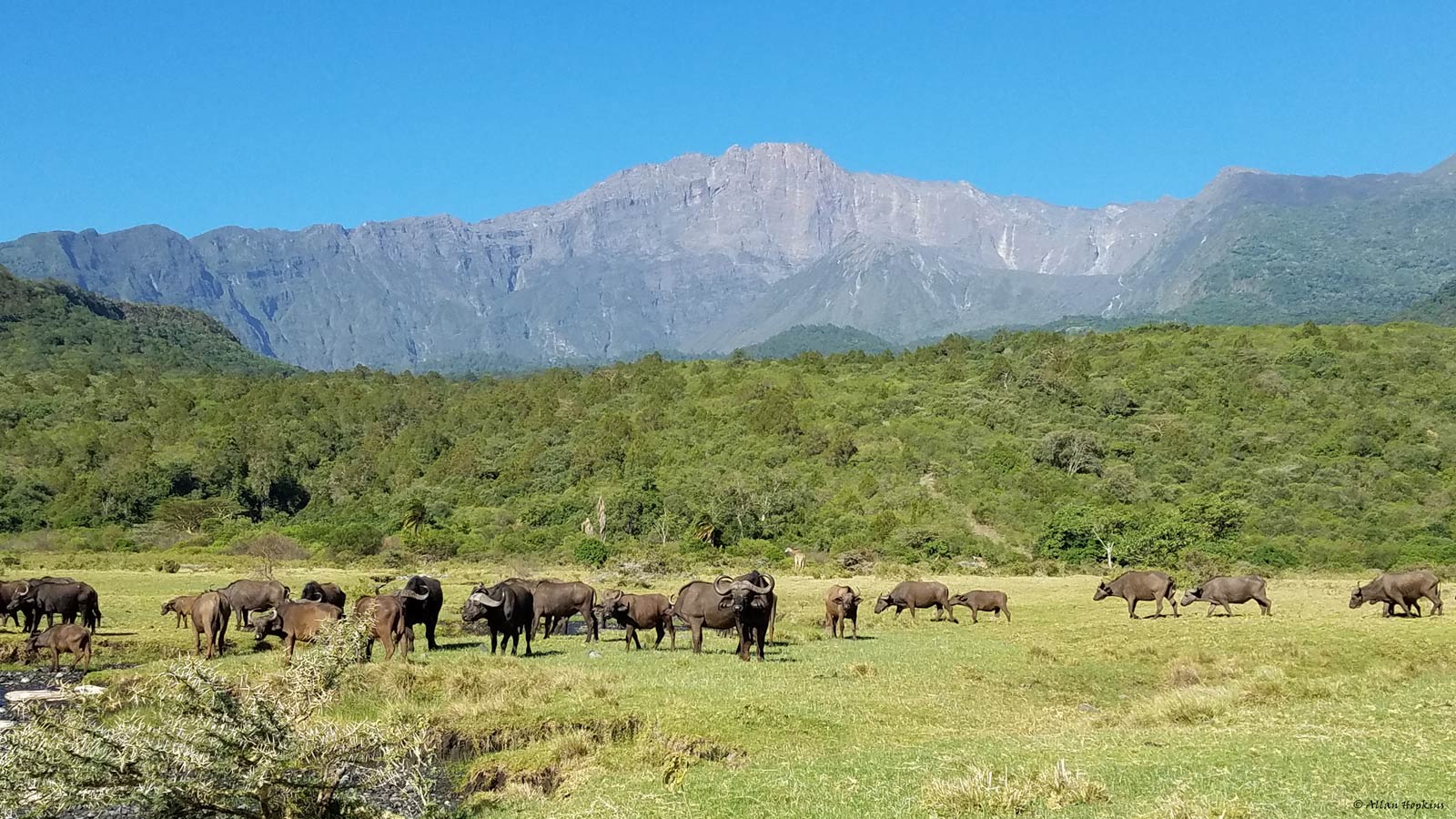
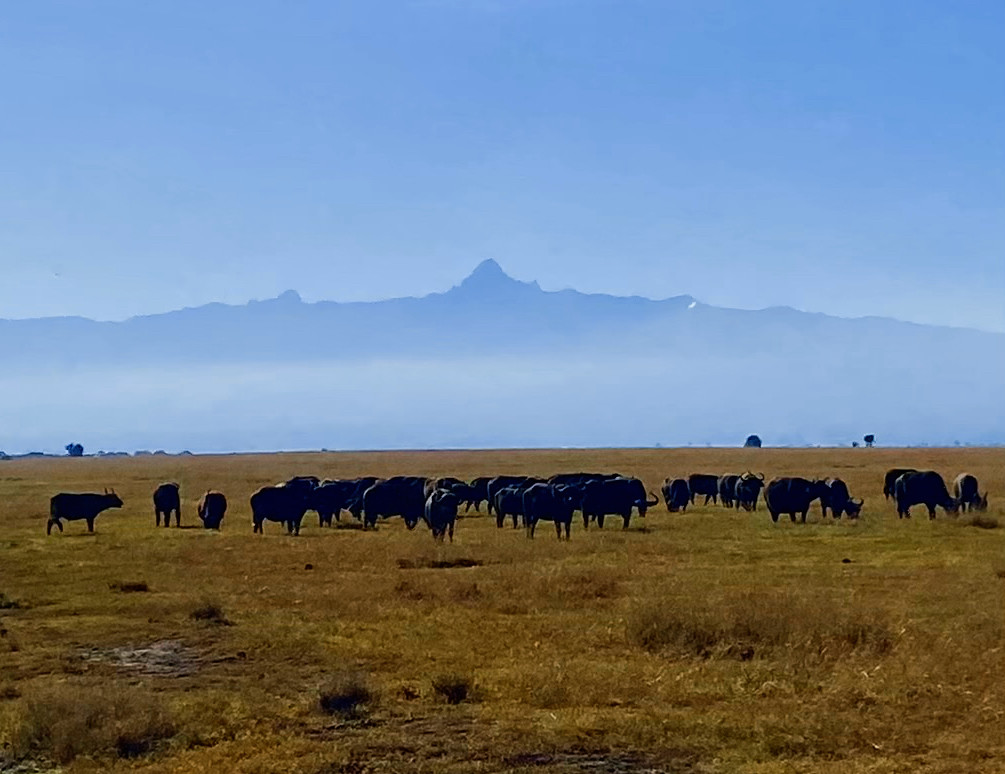
Occasionally, buffalo wander up into the higher altitudes of the mountain, attracted by the mineral-rich rocks. Sadly, around 2009, one such buffalo became trapped between rocks and perished from starvation. When local porters found it, the buffalo’s carcass was remarkably preserved due to the cold conditions.
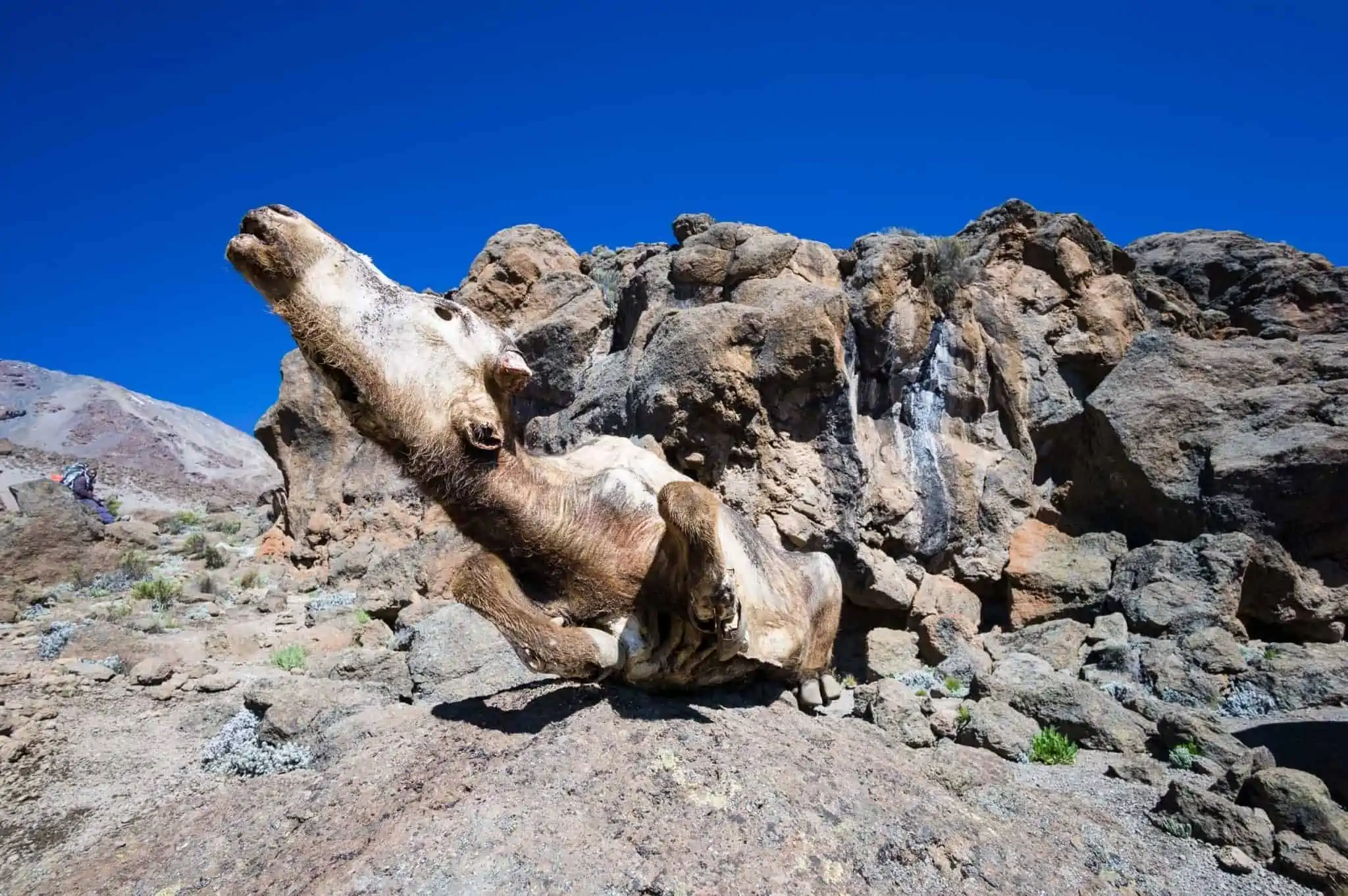 The remains were relocated from where they were found and placed near the hiking trail between the Third Cave Campsite and School Hut, serving as an unusual attraction for trekkers on the northern routes. This macabre display lasted for several years, adding a unique element to the journey for those passing by.
The remains were relocated from where they were found and placed near the hiking trail between the Third Cave Campsite and School Hut, serving as an unusual attraction for trekkers on the northern routes. This macabre display lasted for several years, adding a unique element to the journey for those passing by.Classification:
- Kingdom: Animalia
- Phylum: Chordata
- Class: Mammalia
- Order: Artiodactyla
- Family: Bovidae
- Genus: Syncerus
- Species: S. caffer
- Subspecies: S. c. caffer
Physical Appearance:
- Size: Males can weigh between 400 to 800 kg (880 to 1,760 lbs), with females being slightly smaller. They stand about 1.0 to 1.7 meters (3.3 to 5.6 feet) at the shoulder.
- Coat: Their coat is typically dark brown to black, providing excellent camouflage in the African savannahs. Unlike some other buffalo subspecies, the Cape buffalo’s coat is uniformly dark.
- Horns: Both males and females have horns, but those of males are more massive. The horns form a distinctive, fused base, creating a “boss” or helmet shape, which can be used in defense against predators like lions.
Adaptations:
- Social Behavior: Cape buffaloes are highly social, living in herds that can number from a few individuals to several hundred. This social structure offers protection against predators, with older or injured buffaloes often receiving support from the group.
- Defense Mechanisms: They are known for their aggressive defense strategies, including forming a protective circle around calves or injured members when threatened.
- Diet: Primarily grazers, they feed on a variety of grasses but can adapt to browse when grass is scarce, showing dietary flexibility.
- Heat Regulation: Their dark skin absorbs heat, but they also wallow in mud to cool off, which also helps in repelling insects.
Habitat:
- Range: The Cape buffalo is found in the savannas, grasslands, and woodlands of Southern and East Africa. They prefer areas with water sources and good grazing land but are adaptable to various environments within their range.
- Territorial Behavior: They have large home ranges and can migrate seasonally in search of better grazing or water, showing a degree of nomadism.
Behavior:
- Herding: Herds are led by older, experienced cows, with males often forming bachelor groups or joining mixed herds. The social structure is complex, with hierarchies and strong bonds among members.
- Reproduction: The gestation period is about 11.5 months. Calves are born throughout the year, hidden for the first few weeks before joining the herd for safety.
Conservation Status: The Cape buffalo is not currently endangered, but like many African wildlife species, it faces threats from habitat loss due to agricultural expansion, human-wildlife conflict, and diseases. Conservation efforts include habitat protection, managing human-buffalo interactions, and disease control.
What are buffalo horns made of?
Buffalo horns, like those of other bovids, are composed primarily of a material called keratin. Here’s a breakdown of their composition:
- Keratin: This is the same protein that makes up human hair and nails. Keratin is a fibrous, structural protein that provides strength and durability. In buffalo horns, keratin forms the outer layer, which is hard and smooth.
- Bone Core: Inside the keratin sheath, there’s a bony core that grows from the skull. This core is an extension of the skull bone, covered by the keratin sheath, which does not shed annually like antlers of deer.
- Blood Vessels and Nerves: When the horn is growing, it contains blood vessels and nerves, which are part of the living tissue. However, once the horn is fully grown, these components are less active or absent in the outer keratin layer, though the base where the horn attaches to the skull remains sensitive.
- Structure:
- Outer Sheath: Made entirely of keratin, this part is what you see and what gives the horn its shape and color.
- Inner Core: The bone core provides structural support and is connected to the skull.
Buffalo horns are permanent structures; they grow throughout the animal’s life, unlike antlers which are shed and regrown. The growth rings on buffalo horns can sometimes be used to estimate the age of the animal, much like tree rings. The horns’ shape, size, and curvature can vary significantly between individuals and species, serving multiple functions from defence to social signalling within herds. A buffaloes horns is used as a weapon for defence mechanism when they face danger from predators like lions of the Serengeti that have tactically mastered the art of hunting buffaloes as a team.
Additional information
| Habitat | Kilimanjaro National Park, Mount Meru, Mount Kenya, Serengeti |
|---|

